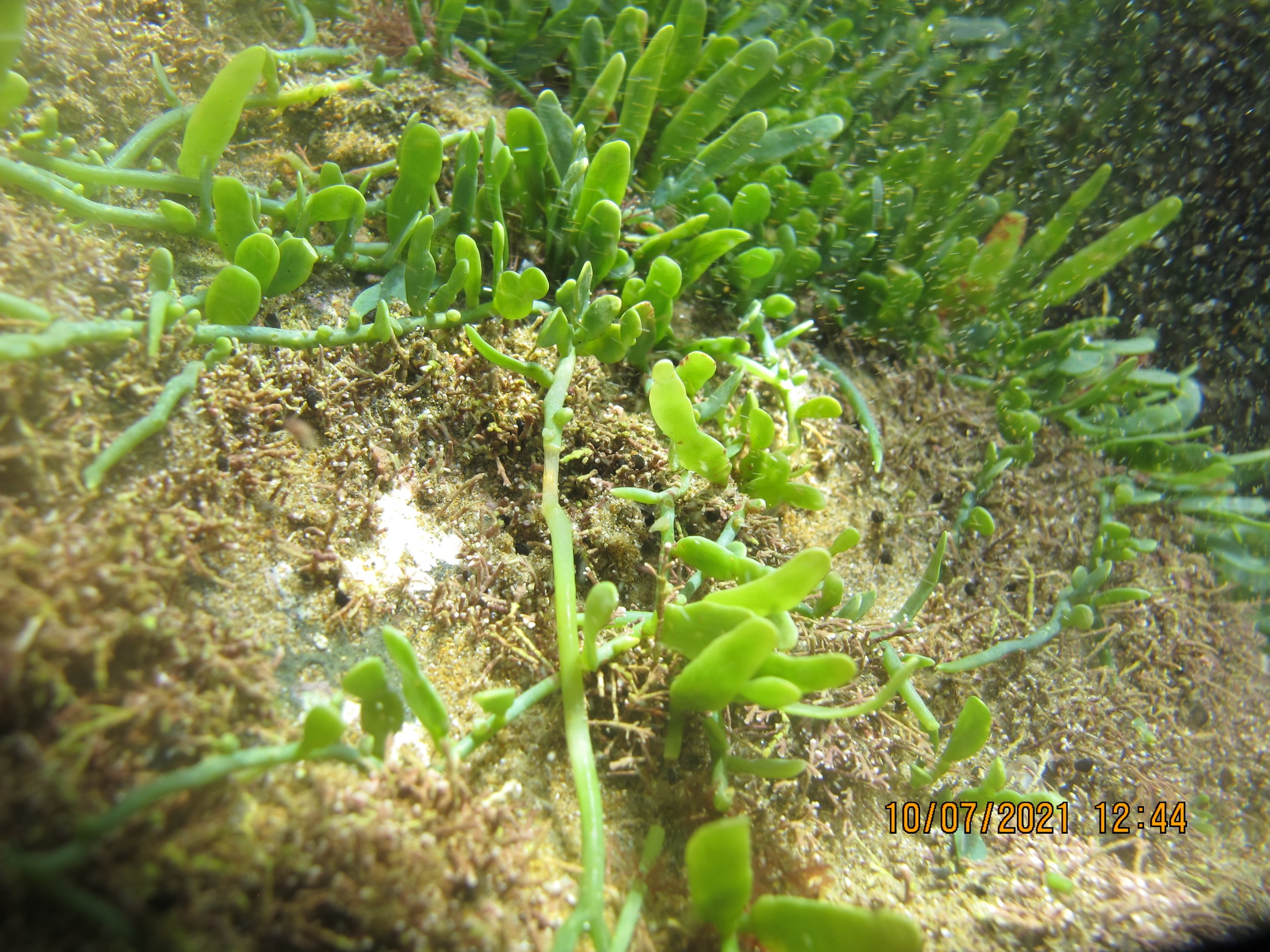The latest from the exotic caulerpa program
Controlled Area Notices have changed
Biosecurity New Zealand has updated the legal controls for parts of the upper North Island to help prevent the spread of exotic caulerpa seaweed. New Controlled Area Notices (CANs) at five locations around the Hauraki Gulf, Coromandel and Bay of Islands are in force from Wednesday 1 October.
Treatment tool reports published
Reports on the trials of two promising tools to combat exotic caulerpa are now available on the MPI website. A report on a UV-C light tool is here. This project by Advanced Aquarium Technologies scaled up a UV-C light array to irradiate exotic caulerpa and kill it without the use of chemicals. The team developed a system to drive the equipment remotely and trialled it at Omakiwi Cove and Waiheke Island.
A second project from Commercial Dive Specialists developed a scalable enclosure (the ‘Rehabitat’) that suctions to the seafloor over an area of caulerpa and can be filled with low-dose chlorine. Their interim report into the development and trialling of this technique is here.
A third report from NIWA (now Earth Sciences New Zealand) documents the development of remote-operated camera systems and associated computer vision using, artificial intelligence (AI) algorithms to detect exotic caulerpa.
Further research planned on impacts and dynamics of exotic caulerpa
Biosecurity NZ says plans are in train to commission two new pieces of research to help us better understand exotic caulerpa, the impacts it's having and what the biomass reductions really mean. Despite significant investment in control tool development, surveillance and impacts research, there are still pressing questions to find answers to.
For example, whether recent biomass reductions in exotic caulerpa are permanent population changes; and what the impacts are on highly valued fisheries species. Earlier research reported significant drops in exotic caulerpa area at multiple locations in 2024 and early 2025 but no consistent reasons for this were identified. Since the research, the biomass continues to decline and we want to better understand whether this is likely to be long-term, the rate of any return, and the drivers of any population expansion.
The results of this research will be critical to inform the most effective times, locations and strategies for local elimination and population management.
Regarding impacts on fisheries, earlier research reports found that in low densities, exotic caulerpa was not having a negative effect on rocky reef or soft sediment invertebrates. While encouraging, there remain many speculative claims that exotic caulerpa has had negative impacts on recreational and commercial fisheries species such as scallops, crayfish, and snapper. We want to better understand the impacts on critical habitats, species interactions, food availability, and the survival of snapper, scallops, crayfish and/or kina.
Subscribe to Biosecurity New Zealand’s exotic caulerpa updates
Tell us if you find any exotic caulerpa
Keep an eye out for exotic caulerpa species and report suspected sightings to us. Take a photo, if possible, and note the location. Then either:
freephone 0800 809 966
or complete the online form at report.mpi.govt.nz

